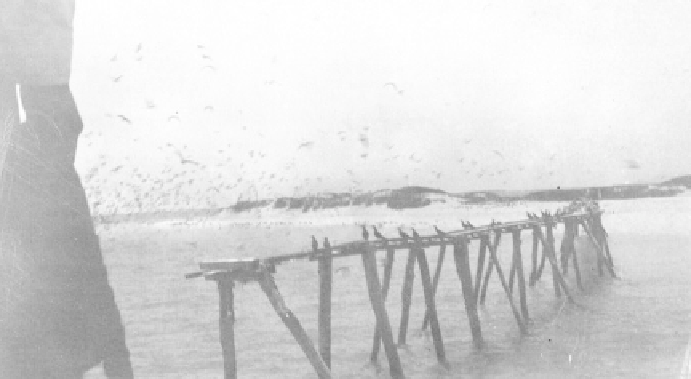Geoscience Reference
In-Depth Information
Source: PRV8340/1 Item 1, Queensland State Archives, Brisbane
his lease at that site. In spite of public protests, both leases were renewed in
to Upolu Cay - one report claimed that almost half the cay had disappeared - and
continued to disregard the requirement to mine only from the foreshores of the
threatened the stability of the cay and increased its susceptibility to erosion
during storms. Finally, in 1934, in response to complaints about the extent of
destruction caused by coral mining, the coral licences for both Upolu and Oyster
Cays were revoked by the QDHM (Bowen and Bowen, 2002, p291).
Other evidence of the destruction caused by coral mining exists for Kings Reef,
near Innisfail, where the operation carried out by Garner also elicited complaints.
Several reports claimed that the nearby bathing beach at Murdering Point had
become unusable as a result of sharp pieces of coral being washed ashore after
Garner's blasting operations. One of those reports stated that:
Garner is in the habit of using explosives to loosen the coral from the reef,
which when broken off he leaves in heaps. The prevailing weather and
currents set in from where he is blasting towards Murdering Point beach,
and the result is that sharp and light pieces of coral are washed in and are a
danger to persons using the beach [...]. The pieces of coral also cut fishing
nets used by the fishermen at the beach. After any boisterous weather there
is always a fair amount of coral washed in to the beach, and even in fine
The use of explosives by Garner was also blamed for driving fish away from the
area: another concern for the fishers besides damage to their nets. On the miners

Search WWH ::

Custom Search